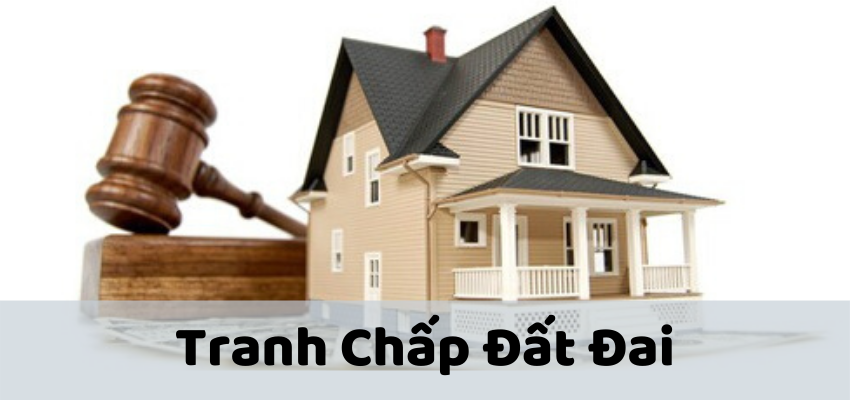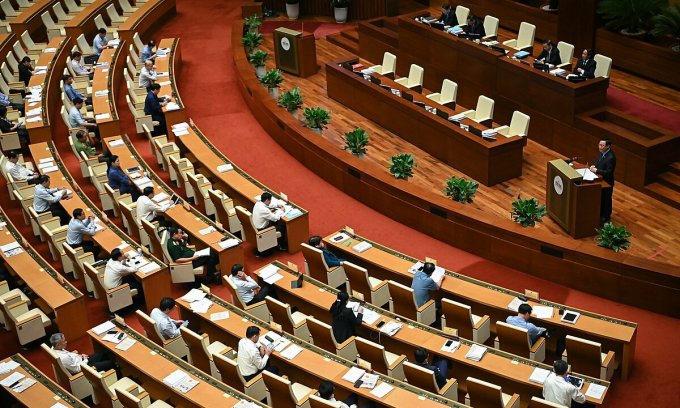Dispute between land plot in Vietnam

Resolving land parcel boundary disputes is an extremely difficult and complicated process and takes a long time. Disputes between adjacent land plots are very common in daily life. So about the matter “Dispute between land plot in Vietnam” Let’s find out in the article below.
Legal grounds
- Civil Code 2015
- Land Law 2013
Principles of determining boundaries between land parcels
According to the provisions of Clause 1, Article 175 of the 2015 Civil Code:
The boundary between adjacent land parcels is determined by agreement or by decision of a competent state agency, but also through local practices or the land use process of 30 years or more without no dispute.
According to Article 11 of Circular 25/2014/TT-BTNMT, the principles for determining boundaries between land parcels are as follows:
Firstly, before taking detailed measurements, surveyors must coordinate with surveyors to assist and guide the determination of the current status and boundaries of land use, together with users and associated land management. The authorities shall determine the boundaries and landmarks of the land plot in the field, mark the tops of the land plot with iron nails, etc. and make a description of the boundaries and landmarks of the land plot as a basis.
Secondy, land plot boundaries and boundaries are determined based on the current state of use, managed and adjusted according to the results of the issuance of Certificates, effective court judgments, and results of dispute settlement. relevant administrative decisions.
In case there is a dispute over the boundary of the land plot, the measurement unit shall notify the commune-level committee. In case the dispute has not been resolved within the time of measurement in the locality, but the actual boundary in use or management can be determined, the measurement shall be carried out according to the actual boundary in use and management; if it is not possible to determine the actual boundary in use or management, it is allowed to measure and draw the boundary of the disputed land plots; The surveying unit is responsible for making a description of the actual status of the disputed land.
Competent authority to settle disputes
According to the provisions of Articles 202 and 203 of the 2013 Land Law:
One is the Chairman of the commune-level People’s Committee who has the authority to settle disputes by way of grassroots conciliation.
Second, the Presidents of the People’s Committees of the province and the district are competent in cases where the involved parties do not have land-related papers. However, the Chairman of the Provincial Committee has jurisdiction over disputes in which one party is an organization, a religious establishment, a Vietnamese residing abroad and a foreign-invested enterprise. Disputes between households individuals and communities shall fall under the jurisdiction of district-level committee chairmen.
Third, the People’s Court if the litigant files a lawsuit.
Order and procedures for settling land parcel boundary disputes
Dispute between land plot in Vietnam
* Voluntary Mediation
Pursuant to Clause 1, Article 202 of the 2013 Land Law, the State encourages the land disputing parties to conciliate themselves or resolve their disputes through grassroots conciliation.
Accordingly, when a land dispute occurs, the parties can mediate themselves to resolve the dispute or settle the dispute through a mediator in accordance with the Law on Grassroots Mediation. If the parties can come to an agreement, the dispute will end.
*Mandatory mediation
Clauses 2 and 3, Article 203 of the Land Law 2013 provide as follows:
“2. Land disputes that the disputing parties cannot conciliate shall send an application to the commune-level People’s Committee of the locality where the disputed land is located for conciliation.
3. Commune-level People’s Committee presidents shall have to organize the conciliation of land disputes in their respective localities; in the course of implementation, must coordinate with the commune-level Vietnam Fatherland Front Committees, member organizations of the Front and other social organizations. Procedures for conciliation of land disputes at commune-level People’s Committees shall be carried out within 45 days from the date of receipt of a written request for settlement of land disputes.
When conciliating at the People’s Committee of the commune (commune, ward or township) where the disputed land is located, the results are divided into two cases:
Case 1: If the conciliation is successful, the dispute will end
Case 2: Mediation failed
Thus, the land dispute (dispute over determining who has the right to use the land) must be reconciled at the commune-level People’s Committee where the land is located. The conciliation procedure at the Commune People’s Committee is mandatory because if there is no conciliation at the Commune People’s Committee, the petition will be returned or the District and Provincial People’s Committee will refuse to settle.
Note: For other disputes related to land use rights such as: Disputes over transactions related to land use rights, disputes over inheritance of land use rights, division of common property of husband and wife is the right to use land. land use, etc., conciliation at the commune-level People’s Committee is not required.
File a lawsuit or request a competent People’s Committee to settle
Pursuant to Article 203 of the 2013 Land Law, land disputes that have been unsuccessfully conciliated at the commune-level People’s Committees shall be resolved in the following order:
Case 1: File a lawsuit at the People’s Court of the place where the disputed land is located if the involved party has a Certificate (Red Book, Pink Book) or one of the papers specified in Article 100 of the 2013 Land Law and Disputes over property attached to land.
Case 2: If an involved party does not have a Certificate or one of the papers specified in Article 100 of the 2013 Land Law, the involved party may only choose one of two forms of settlement as follows:
– Initiate a lawsuit at the People’s Court of the place where the disputed land is located in accordance with the civil procedure law.
– Submit a request for dispute settlement at the competent People’s Committee, specifically:
+ Disputes between households, individuals and communities shall be settled by chairpersons of district-level People’s Committees (districts, urban districts, towns, provincial cities or centrally run cities).
If you agree, the dispute will end, if you don’t agree with the settlement decision, you have the right to complain to the Chairman of the People’s Committee of the province (province or city directly under the Central Government) or initiate a lawsuit at the People’s Court as prescribed. of the law on administrative proceedings (administrative lawsuits).
+ Disputes in which one of the disputing parties is an organization, religious establishment, overseas Vietnamese or foreign-invested enterprise, the provincial-level People’s Committee chairperson shall settle it; if they disagree with the settlement decision, they have the right to complain to the Minister of Natural Resources and Environment or initiate a lawsuit at the People’s Court in accordance with the law on administrative procedures.
An enforceable dispute settlement decision must be strictly observed by the disputing parties. In case the parties fail to comply, the enforcement will be enforced.
Services of LSX
Prestigious professional services: Firstly, the team of consultants and consultants for many years in the field of civil status, and customer support.
On-time: Certainly, with the motto “Get your lawyer right at your fingertips”, we ensure the service always performs on time. The rights and interests of customers always come first.
Cost: Besides, LSX’s service costs are highly competitive; depending on the nature of the particular case. So, we want our guests to have the best possible service experience. Therefore, costs which guaranteed to be the most suitable and economical for customers.
Confidentiality of client information: Finally, all brand information of client LSX will be 100% confidential.
Please contact us immediately if you have any questions about “Dispute between land plot in Vietnam”
Contact LSX
Finally, hope this article is useful for you to answer the question about “Dispute between land plot in Vietnam” If you need any further information, please contact LSX Law firm: at +84846175333 or Email: [email protected]
Please see more
- Legal regulations on land use term in Vietnam
- Conditions for the exercise of rights of land users under Vietnam Law
- Agricultural land use regime according to Vietnam land law
Frequently asked questions
The land use boundary is determined by a specific boundary marker made by a state agency competent to allocate or lease land when allocating or leasing land on the field; recorded in the decision on land allocation or land lease and described in the cadastral records.
And according to the provisions of Point 2.3, Clause 2, Article 8 of Circular 25/2014/TT-BTNMT; the regulation on the boundary of the land plot is the curving line created by the adjacent plot edges; enclose the area belonging to that parcel of land.
If the value of the disputed land is VND 6,000,000 or less: The court fee is VND 300,000
– If the value of the disputed land is from over 6,000,000 VND to 400,000,000 VND: The court fee is 5% of the value of the disputed property.
– If the value of the disputed land is from over 400,000,000 VND to 800,000,000 VND: The court fee is 20,000. 000 VND + 4% of the disputed property value exceeding 400,000,000 VND
– If the value of the disputed land is from over VND 800,000,000 to VND 2,000,000,000: The court fee is VND 36,000,000 + 3% of the disputed property value exceeding VND 800,000,000
– If the value of the disputed land is from over VND 2,000,000,000 to VND 4,000,000,000: The court fee is VND 72,000,000 + 2% of the disputed property value exceeding VND 2,000,000,000
– If the value of the disputed land is over VND 4,000,000,000: The court fee is VND 112,000,000 + 0.1% of the value of the disputed property exceeding VND 4,000,000,000.
Documents to be prepared include:
The petition is made according to the form specified by the State.
Relevant documents proving the land use right such as: Certificate of land use right or other satisfactory documents as prescribed in Article 100.
The minutes of conciliation are certified by the People’s Committee of the commune where they live and the minutes must be signed by the disputing parties over land use rights to be valid.
Papers of the petitioner such as: identity card or identity card and household registration book.
Other evidencing papers provided by the petitioning party as evidence to settle disputes over land use rights.
Conclusion: So the above is Dispute between land plot in Vietnam. Hopefully with this article can help you in life, please always follow and read our good articles on the website: lsxlawfirm.com




